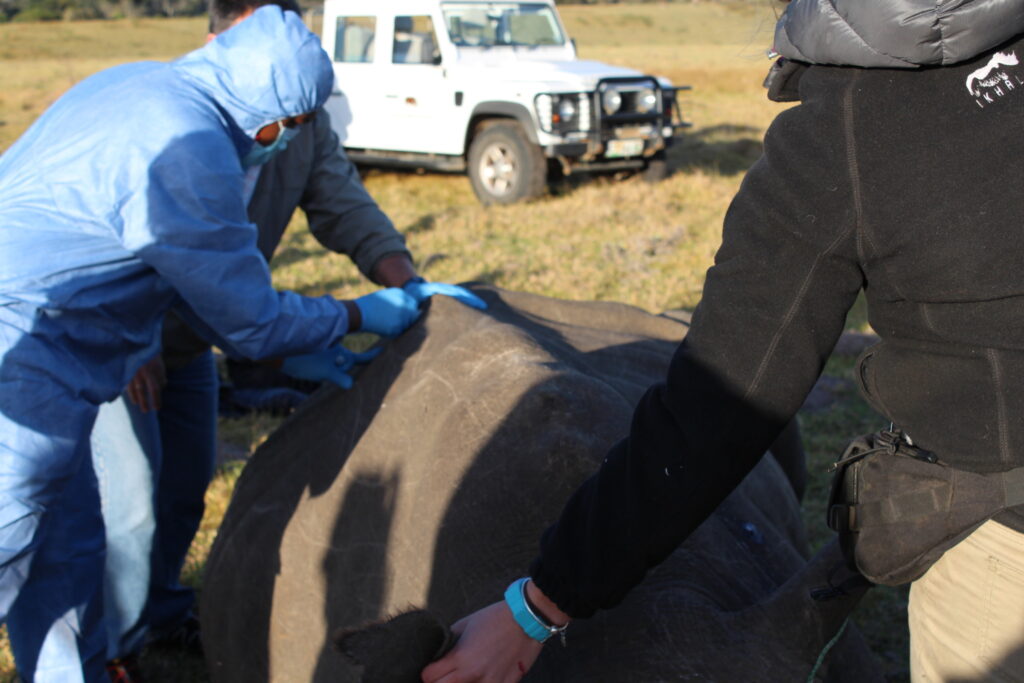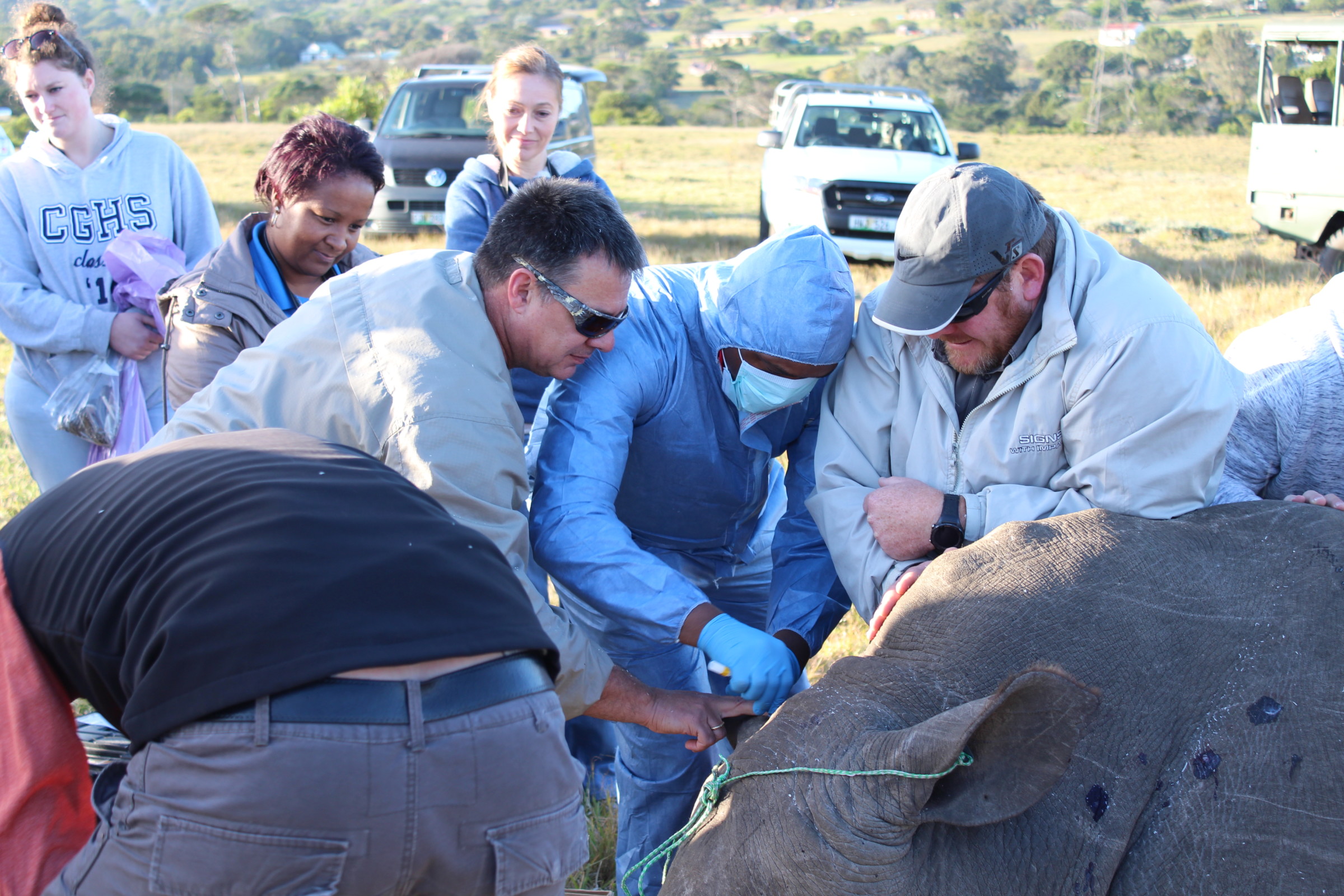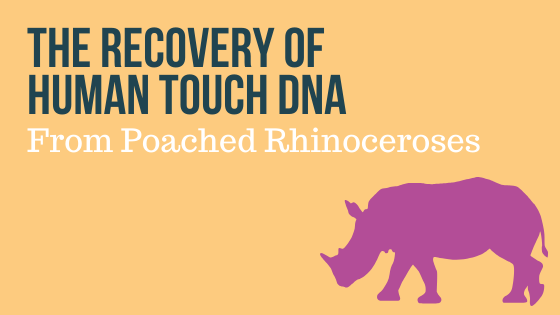In recent years, rhino poaching has increased dramatically in South Africa. This illegal activity is predominantly driven by the growing demand for rhino horn. Poaching cases can be extremely difficult to investigate and prosecute due to the nature of the evidence available at the scene.
To address this challenge, additional investigative tools are needed. At the University of the Free State, we are currently focusing our research on how to optimize the chances of obtaining human touch DNA from the suspects collected from rhino carcasses found on the crime scene.
Written by: M.M. Manqana, Prof. J.P. Grobler, and Dr. K. Ehlers, University of the Free State
Current practices include collecting rhino DNA samples and storing them in a DNA database called RHODIS. This enables law enforcement agencies to link a rhino horn back to a specific rhino or the poaching site.
However, very few laboratories are equipped to handle animal evidence, and those that are generally charge accordingly. The marker sets have to be developed in-house, since commercial kits are not available.
An additional limiting factor to consider is that due to the low genetic diversity of white rhinos, the profile probabilities of identifying a rhino horn to a specific rhino is not very high. If we can prove that touch DNA from a suspect can be collected from a rhino carcass, it will have tremendous benefits.
Firstly, the evidence samples can go through the normal work flow in the forensic laboratories. By making use of the normal workflow, time and money will be saved. This is a very important factor, since current resources for these types of crimes are very limited.
Second, by obtaining a DNA profile from the suspect, the profile can be searched against the South African National Forensic DNA Database. The science is accepted in a court of law and the technology is very well understood by the legal community.
A more effective method is needed to investigate poaching cases, and the aim of our research is to investigate the potential to recover and profile human DNA collected from poached rhinos. If possible, and if the success rate can be improved, this technique will be suitable for immediate use in rhino poaching incidents.
Research
Different collection techniques for recovering touch DNA from rhino skin have been tested. Rhino skin is very dry, rough and covered in dirt, making recovering touch DNA difficult.
Techniques included swabbing with different types of swabs with various types of tips from a variety of manufactures. Whatman FTA cards as well as tapelifting methods were also tested.
The rhinos were swabbed in different areas where suspects might have touched the rhino during the poaching incidents (See Figure 2.1 and 2.2). These areas include the back, rump, ears, legs, head and horns.


Prescribed regulations from the SAPS regarding proper protective equipment was utilized during the entire handling of the samples. The samples were labelled, packaged in sealed perforated exhibit bags and kept until processing at the University of Free State.
The samples were processed using the Casework Direct Kit, Custom from Promega. DNA was eluted from the swabs following the procedure described in “processing of swabs”.
The FTA cards and tapelifts were cut into small pieces and placed into extraction tubes.
Afterwards, the samples were amplified by using the PowerPlex® ESI 16 System from Promega, which offers a Direct Amplification of DNA from swabs method.
At this stage, we were able to obtain mixtures as well as partial profiles. These results are acceptable in the court of law, although they cannot be included on the National Forensic DNA Database.
Preliminary results indicated that both the Floq swabs and the tape lifts yielded reliable results, but due to the working environment and surface area of the rhino skin, tape lifiting provedd to be the better option for sample collection. The dry and rough skin surface of a rhino sometimes disintegrated the swab during collection.
The preliminary study suggests that it is advisable to attempt the recovery of touch DNA using the collection method such as swabs and tape lifts, irrespective of the weather conditions.
The research is still undergoing where methods of collection as well as DNA process are being optimised to collect the maximum amount of DNA available on the rhinos.
The recovery of human touch DNA from evidence retrieved from wildlife crimes may provide a key identification tool for linking or excluding suspects. This is a step forward in combating wildlife crime and can be used to for education, and to deter potential poachers.
WOULD YOU LIKE TO SEE MORE ARTICLES LIKE THIS? SUBSCRIBE TO THE ISHI BLOG BELOW!
SUBSCRIBE NOW!


